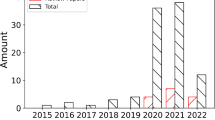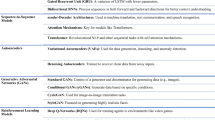Abstract
Detecting plant health conditions plays a key role in farm pest management and crop protection. In this study, measurement of hyperspectral leaf reflectance in rice crop (Oryzasativa L.) was conducted on groups of healthy and infected leaves by the fungus Bipolaris oryzae (Helminthosporium oryzae Breda. de Hann) through the wavelength range from 350 to 2 500 nm. The percentage of leaf surface lesions was estimated and defined as the disease severity. Statistical methods like multiple stepwise regression, principal component analysis and partial least-square regression were utilized to calculate and estimate the disease severity of rice brown spot at the leaf level. Our results revealed that multiple stepwise linear regressions could efficiently estimate disease severity with three wavebands in seven steps. The root mean square errors (RMSEs) for training (n=210) and testing (n=53) dataset were 6.5% and 5.8%, respectively. Principal component analysis showed that the first principal component could explain approximately 80% of the variance of the original hyperspectral reflectance. The regression model with the first two principal components predicted a disease severity with RMSEs of 16.3% and 13.9% for the training and testing dataset, respectively. Partial least-square regression with seven extracted factors could most effectively predict disease severity compared with other statistical methods with RMSEs of 4.1% and 2.0% for the training and testing dataset, respectively. Our research demonstrates that it is feasible to estimate the disease severity of rice brown spot using hyperspectral reflectance data at the leaf level.
Similar content being viewed by others
References
Adams, M.L., Philpot, W.D., Novell, W.A., 1999. Yellowness index: an application of spectral second derivatives to estimate chlorosis of leaves in stressed vegetation. International Journal of Remote Sensing, 20(18):3663–3675. [doi:10.1080/014311699211264]
Brenchley, G.H., 1968. Aerial photography for the study of plant diseases. Annual Review of Phytopathology, 6(1):1–22. [doi:10.1146/annurev.py.06.090168.000245]
Card, D.H., Peterson, D.L., Matson, P.A., 1988. Prediction of leaf chemistry by the use of visible and near infrared reflectance spectroscopy. Remote Sensing of Environment, 26(2):123–147. [doi:10.1016/0034-4257(88)90092-2]
Carter, G.A., 1994. Ratios of leaf reflectance in narrow wavebands as indicators of plant stress. International Journal of Remote Sensing, 15(3):697–703. [doi:10.1080/01431169408954109]
Colwell, R.N., 1956. Determining the prevalence of certain cereal diseases by means of aerial photography. Hilgardia, 26:223–286.
Curran, P.J., 1989. Remote sensing of foliar chemistry. Remote Sensing of Environment, 30(3):271–278. [doi:10.1016/0034-4257(89)90069-2]
Everitt, J.H., Escobar, D.E., Summary, K.R., Davis, M.R., 1994. Using airborne video, global positioning system, and geographical information system technologies for detecting and mapping citrus blackfly infestations. Southwestern Entomologist, 19(2):129–138.
Fung, T., LeDrew, E., 1987. Application of principal components analysis to change detection. Photogrammetric Engineering and Remote Sensing, 53(12):1649–1658.
Hansen, P.M., Jørgensen, J.R., Thomsen, A., 2002. Predicting grain yield and protein content in winter wheat and spring barley using repeated canopy reflectance measurements and partial least squares regression. Journal of Agricultural Science, 139(3):307–318. [doi:10.1017/S0021859602002320]
Holden, H., LeDrew, E., 1998. Spectral discrimination of healthy and non-healthy corals base on cluster analysis, principal components analysis and derivative spectroscopy. Remote Sensing of Environment, 65(2):217–224. [doi:10.1016/S0034-4257(98)00029-7]
Huang, J.F., Apan, A., 2006. Detection of sclerotinia rot disease on celery using hyperspectral data and partial least squares regression. Journal of Spatial Science, 52(2):129–142.
Jackson, R.D., 1986. Remote sensing of biotic and abiotic plant stress. Annual Review of Phytopathology, 24(1):265–287. [doi:10.1146/annurev.py.24.090186.001405]
Jackson, H.R., Wallen, V.R., 1975. Microdensitometer measurements of sequential aerial photographs of field beans infected with bacterial blight. Phytopathology, 65(9):961–968.
Kimes, D.S., Nelson, R.F., Manry, M.T., Fung, A.K., 1998. Attributes of neural networks for extracting continuous vegetation parameters from optical and radar measurements. International Journal of Remote Sensing, 19(14):2639–2663. [doi:10.1080/014311698214433]
Kobayashi, T., Kanda, E., Kitada, K., Ishiguro, K., Torigoe, Y., 2001. Detection of rice panicle blast with multispectral radiometer and the potential of using airborne multispectral scanners. Phytopathology, 91(3):316–323. [doi:10.1094/PHYTO.2001.91.3.316]
Mirik, M., Michels, G.J.Jr, Kassymzhanova-Mirik, S., Elliott, N.C., Catana, V., Jones, D.B., Bowling, R., 2006. Using digital image analysis and spectral reflectance data to quantify damage by greenbug (Hemitera: Aphididae) in winter wheat. Computers and Electronics in Agriculture, 51(1–2):86–98. [doi:10.1016/j.compag.2005.11.004]
Mirik, M., Michels, G.J.Jr, Kassymzhanova-Mirik, S., Elliott, N.C., 2007. Reflectance characteristics of Russian wheat aphid (Hemiptera: Aphididae) stress and abundance in winter wheat. Computers and Electronics in Agriculture, 57(2):123–134. [doi:10.1016/j.compag.2007.03.002]
Monteiro, S.T., Minekawa, Y., Kosugi, Y., Akazaw, T., Oda, K., 2007. Prediction of sweetness and amino acid content in soybean crops from hyperspectral imagery. ISPRS Journal of Photogrammetry and Remote Sensing, 62(1):2–12. [doi:10.1016/j.isprsjprs.2006.12.002]
Muhammed, H.H., Larsolle, A., 2003. Feature vector based analysis of hyperspectral crop reflectance data for discrimination and quantification of fungal disease severity in wheat. Biosystems Engineering, 86(2):125–134. [doi:10.1016/S1537-5110(03)00090-4]
Neblette, C.B., 1927. Aerial photography for the study of plant diseases. Photo-Era Magazine, 58:346.
Nilsson, H.E., 1995. Remote sensing and image analysis in plant pathology. Annual Review of Phytopathology, 33(1):489–527. [doi:10.1146/annurev.py.33.090195.002421]
Picco, A.M., Rodolfi, M., 2002. Pyricularia grisea and Bipolaris oryzae: a preliminary study on the occurrence of airborne spores in a rice field. Aerobiologia, 18(2):163–167. [doi:10.1023/A:1020654319130]
Price, J.C., 1994. How unique is spectral signatures? Remote Sensing of Environment, 49(3):181–186. [doi:10.1016/0034-4257(94)90013-2]
Singh, D., Sao, R., Singh, K.P., 2007. A remote sensing assessment of pest infestation on sorghum. Advances in Space Research, 39(1):155–163. [doi:10.1016/j.asr.2006.02.025]
Thenkabail, P.S., Smith, R.B., Pauw, E.D., 2000. Hyperspectral vegetation indices and their relationships with agricultural crop characteristics. Remote Sensing of Environment, 71(2):158–182. [doi:10.1016/S0034-4257(99)00067-X]
Vogelmann, J.E., Rock, B.N., Moss, D.M., 1993. Red edge spectral measurements from sugar maple leaves. International Journal of Remote Sensing, 14(8):1563–1575. [doi:10.1080/01431169308953986]
Wang, H.W., 1999. Partial Least-Squares Regression—Method and Applications. National Defense Industrial Press, Beijing, p. 150–170 (in Chinese).
Warner, T.A., Shank, M., 1997. An evaluation of the potential for fuzzy classification of multispectral data using artificial neural networks. ISPRS Journal of Photogrammetric Engineering and Remote Sensing, 63(11):1285–1294.
West, J.S., Bravo, C., Oberit, R., Lemaire, D., Moshou, D., McCartney, H.A., 2003. The potential of optical canopy measurement for targeted control of field crop diseases. Annual Review of Phytopathology, 41(1):593–614. [doi:10.1146/annurev.phyto.41.121702.103726]
Williams, P.C., Norris, K.H., Gehrke, C.W., Bernstein, K., 1983. Comparison of near-infrared methods for measuring protein and moisture in wheat. Cereal Foods World, 28(2):149–152.
Yoder, B.J., Pettigrew-Crosby, R.E., 1995. Predicting nitrogen and chlorophyll content and concentrations from reflectance spectra (400∼2500 nm) at leaf and canopy scales. Remote Sensing of Environment, 53(3):199–211. [doi:10.1016/0034-4257(95)00135-N]
Author information
Authors and Affiliations
Corresponding author
Additional information
Project supported by the Hi-Tech Research and Development Program (863) of China (No. 2006AA10Z203), and the National Science and Technology Task Force Project (No. 2006BAD10A01), China
Rights and permissions
About this article
Cite this article
Liu, Zy., Huang, Jf., Shi, Jj. et al. Characterizing and estimating rice brown spot disease severity using stepwise regression, principal component regression and partial least-square regression. J. Zhejiang Univ. - Sci. B 8, 738–744 (2007). https://doi.org/10.1631/jzus.2007.B0738
Received:
Accepted:
Issue Date:
DOI: https://doi.org/10.1631/jzus.2007.B0738
Key words
- Hyperspectral reflectance
- Rice brown spot
- Partial least-square (PLS) regression
- Stepwise regression
- Principal component regression (PCR)




